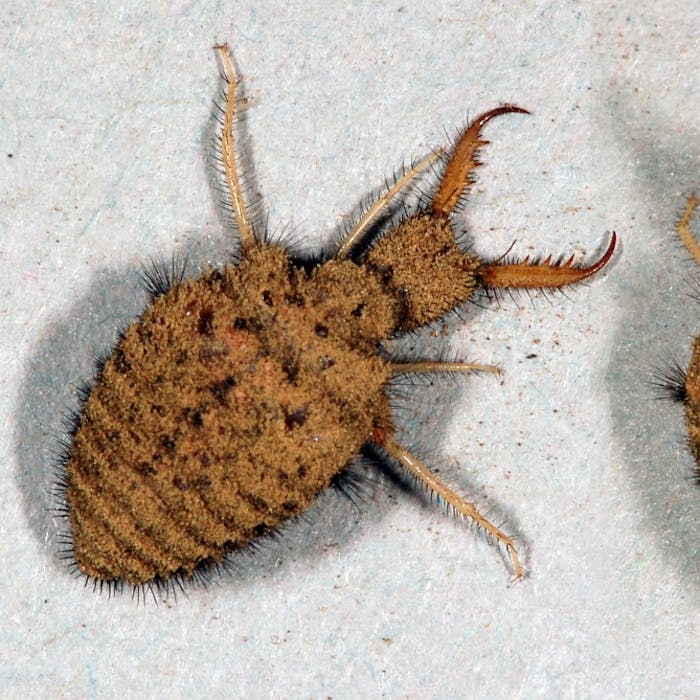
Antlions - truly fearsome to find in the sand
Mature antlions look like a cross between a lacewing and a dragonfly. But it is their form at the larval stage that earns them their predatory name. These alarming looking small monsters dig pits in sand to trap the ants that they feed upon.
There are several species of antlion around the world, but only one species occurs in the UK, where they remain extremely rare. Only two breeding colonies are known, at Holkham National Nature Reserve in Norfolk, and Sandlings in Suffolk. Since their discovery at these sites within the last 30 years, the insects have thrived and increased their numbers. So it's good news for the antlions, though perhaps less good news for the local ants.
Antlion larvae require a sandy location where they lurk in pits waiting for other insects to slide in. When an unsuspecting ant tumbles into the pit, its chances of survival are slim. The larva quickly starts flicking grains of sand at the struggling ant to knock it back into the base of the pit - right into the fearsome pincers of the waiting predator, where it is sucked dry.
Antlions, whose digestive system is so efficient they excrete no solid waste, are found over most of the rest of Europe.
The larvae are up to 10mm long and live for two years before becoming adults with wings spanning nearly 70mm. The adults are nocturnal and live for just a few weeks, so are less likely to be seen by visitors to the Norfolk and Suffolk reserves.
These distinctive insects need an environment with open banks of sand, abundant prey and pine trees where the adults mate.
Further reading
Links to external websites are not maintained by Bite Sized Britain. They are provided to give users access to additional information. Bite Sized Britain is not responsible for the content of these external websites.
